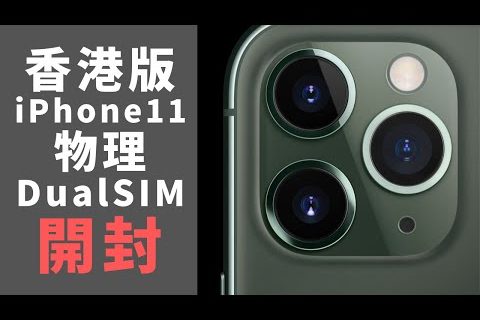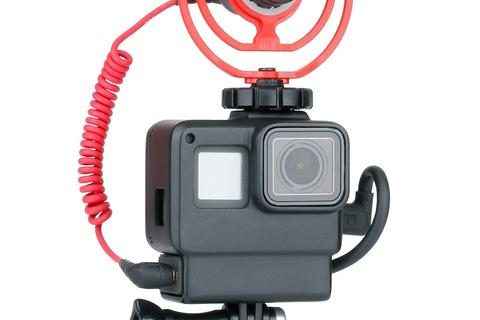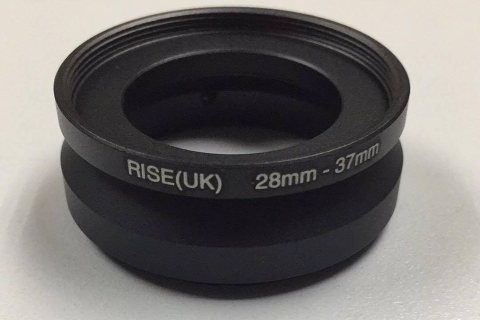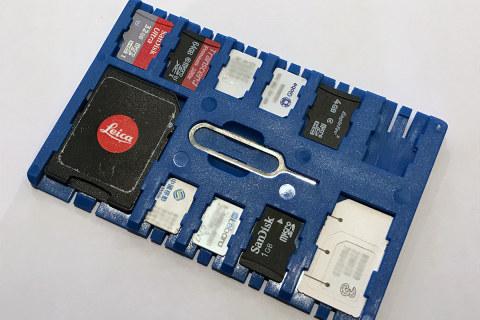毎日新聞
http://www.mainichi-msn.co.jp
「インターネット検索最大手の米グーグルが、独自の携帯電話機を開発し来年にも発売する計画を進めていることが2日明らかになった。」
ちなみにここが毎日新聞のソース「米ウォールストリート・ジャーナル紙」
http://online.wsj.com/
「将来的には携帯でのネット広告を収益源に電話料金を無料化する構想もあるという。」
そうなってくれればいいなぁ・・・。
さて、Googleは「独自の携帯電話端末を開発」と言っている。
Googleは端末の工場持っていないのでOEMになるはず。でもってGoogleのサイズを考えるとある程度の量が必要てことで大きい数をまわせる工場。こうなると数が限られてくるような気がしますがいったいどこの工場と契約するのでしょう?
と思ったら、ウォールストリートの記事に書いてあった。候補の一つは「LG Electronics」らしい。LG携帯はあまりなじみが無かったが、プラダ携帯で目を引くようになりましたね。
一番気になるのが、Google端末はSymbianに行くのかそれともWindowsに行くのか?
ちなみに、Google携帯端末のプロトタイプは既に存在在るとの事。見た人いわく「they aren’t as revolutionary as the iPhone. One was likened to a slim Nokia Corp. phone with a keyboard that slides out. Another phone format presented by Google looked more like a Treo or a BlackBerry.」
LGのプラダ携帯、思っていたより面白かったのでどう出てくるか楽しみ。
Appendix…..
http://online.wsj.com/article/SB118602176520985718.html?mod=hpp_us_pageone
Google Pushes Tailored Phones
To Win Lucrative Ad Market
By AMOL SHARMA and KEVIN J. DELANEY
August 2, 2007; Page A1
Google Inc. is searching for growth in cellphones.
The company, which has made billions of dollars in Web advertising on computers, is courting wireless operators to carry handsets customized to Google products, including its search engine, email and a new mobile Web browser, say people familiar with the plans. It wants to capture a big chunk of the fast-growing market for ads on cellphones.
Google has invested hundreds of millions of dollars in the cellphone project, say people who have been briefed on it. It has developed prototype handsets, made overtures to operators such as T-Mobile USA and Verizon Wireless, and talked over technical specifications with phone manufacturers. It hopes multiple manufacturers will make devices based on its specs and multiple carriers will offer them.
For wireless operators, the plans are a double-edged sword. Google’s powerful brand and its popular Web services could help operators sign up more subscribers to data packages, on which they increasingly rely as voice revenue declines. However, operators have been wary about losing control over the mobile-ad market.
The long-rumored Google phones are still in the planning stages, and wouldn’t be available to consumers until next year at the earliest, say people familiar with the idea. Some details are likely to shift as the plans develop.
The Mountain View, Calif., company has made clear it is serious about developing advanced software and services for cellphones. “What’s interesting about the ads in the mobile phone is that they are twice as profitable or more than the nonmobile phone ads because they’re more personal,” said Google Chief Executive Eric Schmidt at the D: All Things Digital conference in May.
A Google spokesman yesterday declined to comment on a Google phone project, but noted: “We are partnering with almost all of the carriers and manufacturers to get Google search and other Google applications onto their devices and networks.”
The Google phone project goes far beyond Google’s existing deals to include its search engine or applications such as Maps on select handsets, say the people familiar with the matter.
The company’s past efforts to get its software on cellphones have raised some concerns in the industry. Verizon Wireless Chief Executive Lowell McAdam said the carrier has chosen not to integrate Google’s Web search engine tightly into its phones because of Google’s demands to get a large share of search-based ad revenue.
“What this really boils down to is a battle for the mobile ad dollar,” Mr. McAdam said in a recent interview. “They want a disproportionate share of the revenue.” Mr. McAdam declined to comment specifically on any Google phones.
Google has announced that it may bid for wireless-spectrum licenses at a coming government auction. The Federal Communications Commission on Tuesday approved rules addressing some of Google’s concerns about the sale.
If it owned spectrum, Google might turn into a phone operator itself. However, such a project would take years to come to fruition and cost billions of dollars. For now, Google has to work with existing cellphone operators to get its mobile products to consumers.
In recent months Google has rolled out mobile versions of products such as the YouTube video-sharing site. It has made deals to include its search engine or applications such as Google Maps and Gmail on select handsets. But the company has sometimes been frustrated at the limited distribution it has achieved. In some cases, Google has managed to get around operators. Its 411 location search service can be accessed by dialing an 800 number from any handset.
Now it is drafting specifications for phones that can display all of Google’s mobile applications at their best, and it is developing new software to run on them. The company is conducting much of the development work at a facility in Boston, and is working on a sophisticated new Web browser for cellphones, people familiar with the plans say.
The prize for Google: the potential to broker ads on the mobile phones, complementing the huge ad business it has built online. Google even envisions a phone service one day that is free of monthly subscription charges and supported entirely through ad revenue, people familiar with the matter say.
Last year, global spending on mobile-phone advertising, including placement of ads in text messages, Web pages, video and all other content, was only $1.5 billion, according to eMarketer. But that figure is projected to grow to nearly $14 billion by 2011, the market research firm says.
The proposed Google phone, Apple Inc.’s iPhone and efforts by other technology companies are aimed at making Web and computer functions easier for consumers to use on cellphones. Today, surfing the Web, listening to music and watching video on cellphones are often clunky experiences.
Unlike Apple, whose cellphone is available exclusively through AT&T, Google is hoping that multiple operators will offer its phone. And Google is ready to relinquish some control over design, allowing manufacturers to create devices based on a common set of specifications.
Google has approached several wireless operators in the U.S. and Europe in recent months, including AT&T, T-Mobile USA and Verizon Wireless, a joint venture of Verizon Communications Inc. and Vodafone Group PLC, people familiar with the situation say. T-Mobile USA, a unit of Deutsche Telekom AG, appears to be the furthest along in considering it, these people say. Andy Rubin, who helped design T-Mobile’s popular Sidekick phone, now works at Google and is involved in its handset project.
Google recently struck a deal with Sprint Nextel Corp. to have a wide array of its services bundled into devices for that carrier’s high-speed wireless network based on the nascent WiMax technology. Both companies declined to comment on whether that relationship would extend to offering Google-customized phones on Sprint’s existing cellular network.
The specifications Google has laid out for devices suggest that manufacturers include cameras for photo and video, and built-in Wi-Fi technology to access the Web at hot spots such as airports, coffee shops and hotels. It also is recommending that the phones be designed to work on carriers’ fastest networks, known as 3G, to ensure that Web pages can be downloaded quickly. Google suggests the phones could include Global Positioning System technology that identifies where people are.
People who have seen Google’s prototype devices say they aren’t as revolutionary as the iPhone. One was likened to a slim Nokia Corp. phone with a keyboard that slides out. Another phone format presented by Google looked more like a Treo or a BlackBerry. It’s not clear which manufacturers might build Google wireless devices, though people familiar with the project say LG Electronics Co. of South Korea is one company that has held talks with Google. Google has already lined up a series of hardware component and software partners and signaled to carriers that it’s open to various degrees of cooperation on their part, the people say.
Google doesn’t plan to charge a licensing fee to hardware makers or operators, people familiar with the matter say. The company has suggested the phones could carry the Google brand alongside the brand of the operator, or they could be distributed without the Google name. The Google brand has yet to appear on a significant piece of consumer hardware.
Some executives at cellphone operators were skeptical about Google’s efforts. They noted the case of Walt Disney Co.’s ESPN, which introduced a sports-centric handset but was forced to shut down the venture last year amid soft demand.
Apple’s iPhone could be a formidable competitor among consumers — and also present strategic complications. Four of Apple’s eight directors also serve as directors or advisers to Google. Mr. Schmidt, the Google CEO, is on Apple’s board. Those with ties to both companies might find it difficult to avoid conflicts of interest.
Google has generally had better luck in Europe than in the U.S. in getting its software on cellphones. It has forged a relationship with the United Kingdom’s Vodafone Group PLC to provide the search bar on the carrier’s branded Internet homepage, with results customized for cellphone users. T-Mobile in Europe integrates Google’s search bar into its welcome screen for users who have a data plan designed for heavy Web browsing. It’s unclear which carriers in Europe Google is working with on its handset plans.
–Cassell Bryan-Low, Jane Spencer and Evan Ramstad contributed to this article.
Write to Amol Sharma at amol.sharma@wsj.com and Kevin J. Delaney at kevin.delaney@wsj.com














